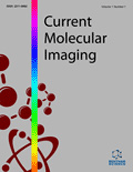Abstract
Glioblastoma is an aggressive form of brain tumor with a poor outcome. Recent advancements using molecular techniques have identified subtypes of glioblastoma that have emerged from the traditional classification. The molecular subtypes are associated with different prognoses and responses to treatment. Both features make molecular sub-typing important in the clinical setting. Detection of each subtype, or key mutations within, currently occurs post-surgically using histological and biochemical based techniques. Non-invasive imaging, particularly magnetic resonance imaging (MRI), is an integral part of glioblastoma diagnosis and patient management. Whether non-invasive imaging can identify molecular subtypes pre-surgically is likely to be true based on recent proof of concept approaches. Correlating molecular subtypes and imaging features will led to more detailed subtypes, a greater stratification of patients, and assignment of the best treatment option. This review summaries the current molecular subtypes based on telomere maintenance mechanisms or genomic approaches, key genetic markers in each tumor subtype, and whether these markers correlate with patient prognosis. An outline of methods to distinguish tumor subtypes is given including efforts toward detecting molecular changes by non-invasive imaging.
Keywords: Glioblastoma, molecular markers, non-invasive imaging, prognosis, tumor subtypes, telomere maintenance mechanisms.
 10
10

